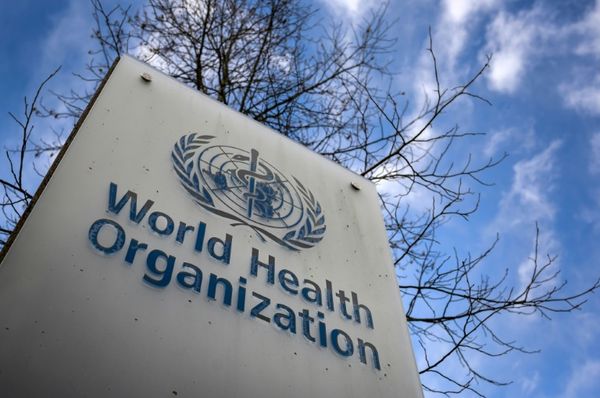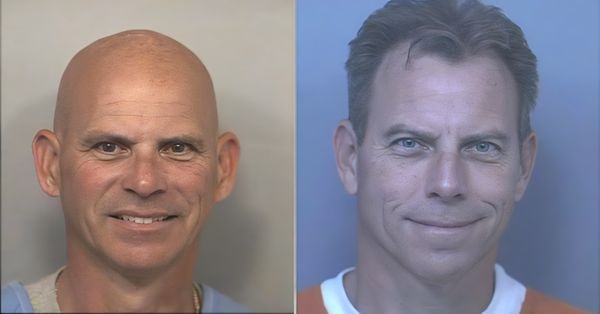
One year into the war that Russia launched against Ukraine, FRANCE 24 takes a closer look at the anti-Western rhetoric President Vladimir Putin used to justify the conflict, which is rooted in events in the early 2000s, according to historian Françoise Thom, an expert on post-Communist Russia.
On February 24, 2022, as a Putin speech was broadcast on television, Russian troops were penetrating into Ukrainian territory, initiating the most important military operation on European soil since World War II.
During his speech, the Russian president tried to justify the invasion with a brutal tirade against the Kyiv government, which he described as “neo-Nazi”, and against the perceived threat posed by NATO and the US against Russia.
This rhetoric, far from being new, dates back to Ukraine's Maidan Revolution in 2014 and Orange Revolution in 2004, according to historian Françoise Thom, an expert on post-Communist Russia, who spoke with FRANCE 24.
FRANCE 24: In February 2022, Putin justified the invasion of Ukraine by citing the necessity to shield Russia from NATO and the West. When was the first time the Kremlin used this rhetoric?
Françoise Thom: Vladimir Putin’s anti-Western rhetoric is long-standing. We can date the change in the Kremlin’s discourse to the colour revolutions between 2003 and 2004. At that time, a wave of anti-corruption and pro-democratic liberal movements were sweeping across several post-Soviet states, namely Georgia – the Rose Revolution – and in Ukraine where the Orange Revolution took place in 2004.
In my opinion, the ongoing war stems from the Orange Revolution, which was a humiliating ordeal for Putin. The candidate he backed, Viktor Yanukovych, lost the popular vote to a pro-European candidate, Viktor Yushchenko, in the 2004 elections.
The outcome was a slap in the face for Putin and he developed an intense hatred towards Ukraine and its people. Interpreting the turn of events as the result of US interference, the ex-KGB agent saw scheming by the US as the only reason for his candidate’s loss.
Putin’s paranoid rhetoric took root from that point on. As illustrated by Kremlin ideologist Vladislav Surkov in a 2004 text: “The enemy is on our doorsteps, we have to defend every Russian and every household against the West”.
During the 2007 Munich Security Conference, Putin challenged the West, especially the US. He then followed up by launching a reform of Russia’s military in 2008. The war against Ukraine therefore has very old roots. Far from an improvisation, the current conflict is part of a wider context tied to Russia’s row with the West.
US foundations were quite active in Ukraine and Georgia in the 1990s and 2000s. What was their role that Putin condemned?
Indeed, there were US foundations operating in Ukraine as well as in Georgia during the colour revolutions. They aimed to train a new generation of executives, which was expected to succeed apparatchiks from the Soviet era. However, we should not see them as manifestations of US foreign policy: They did not necessarily align themselves with the sitting president’s political agenda.
In order to build a starting block for the development of political parties based on liberalism, the role that these foundations played during the colour revolutions was chiefly structured around promoting various tools of election campaigning and on-the-ground organising among these new elites. Even so, the uprisings that took place between 2003 and 2004 were definitely not orchestrated: The population was incensed by post-Communist corruption and the elites were themselves divided.
Putin, who accused the foundations of anti-Russia tendencies that were not necessarily true, thus heavily exaggerated their participation in the colour revolutions. They mainly sought to lend a helping hand to the establishment of liberal democraties ten years after the fall of the Berlin Wall.
What is the relationship between the Kremlin and the EU? Did the annexation of Crimea in 2014 mark a turning point?
In 2013, an association proposed by the European Union to post-Soviet countries, namely Ukraine, set off the powder keg. The project clashed with Putin’s desire to integrate Ukraine into a customs union, the Eurasian Economic Union (EEU), led by Russia.
Putin seeks to build a large European space, from Brest to Vladivostok, where Russia can establish its supremacy while dispelling US influence. In 2013, Ukraine's then president Yanukovych, under pressure from the Kremlin, rejected the association agreement with the EU while opting to join the EEU. Massive protests erupted in Ukraine, which led to the 2014 Maidan Revolution, an insurrection that Yanukovych tried to repress but failed. He absconded and a new government, which Putin labelled as Nazi, came into power.
Putin annexed Crimea several days later, claiming that it was to defend Russia from NATO and that Crimea has always been Russian despite the transfer to Ukraine in 1954, an error he said was committed by the USSR's then leader Nikita Khrushchev. Putin also attempted to conquer southern and eastern Ukraine, but had to settle for two separatist enclaves in the east. The armed conflict ended with the ratification of the Minsk agreements on September 5, 2014.
With the Kremlin’s hostility directed towards the US, Putin seeks to re-enact the Cold War but with a different outcome this time, one that would restore Russia to power. In this respect, Putin’s anti-European discourse is principally a consequence of the ties between the UE and the US and NATO.
Until February 2022, Europe was not considered a real political issue by Putin, but rather as an object of dispute with the US. He thought he was subjugating the region via its reliance on Russian gas, which worked until the invasion of Ukraine that month. Putin's dsicourse with regard to Europe has become more and more hostile as it became apparent in February that the continent was closing ranks around NATO.
This article is a translation of the original in French.







